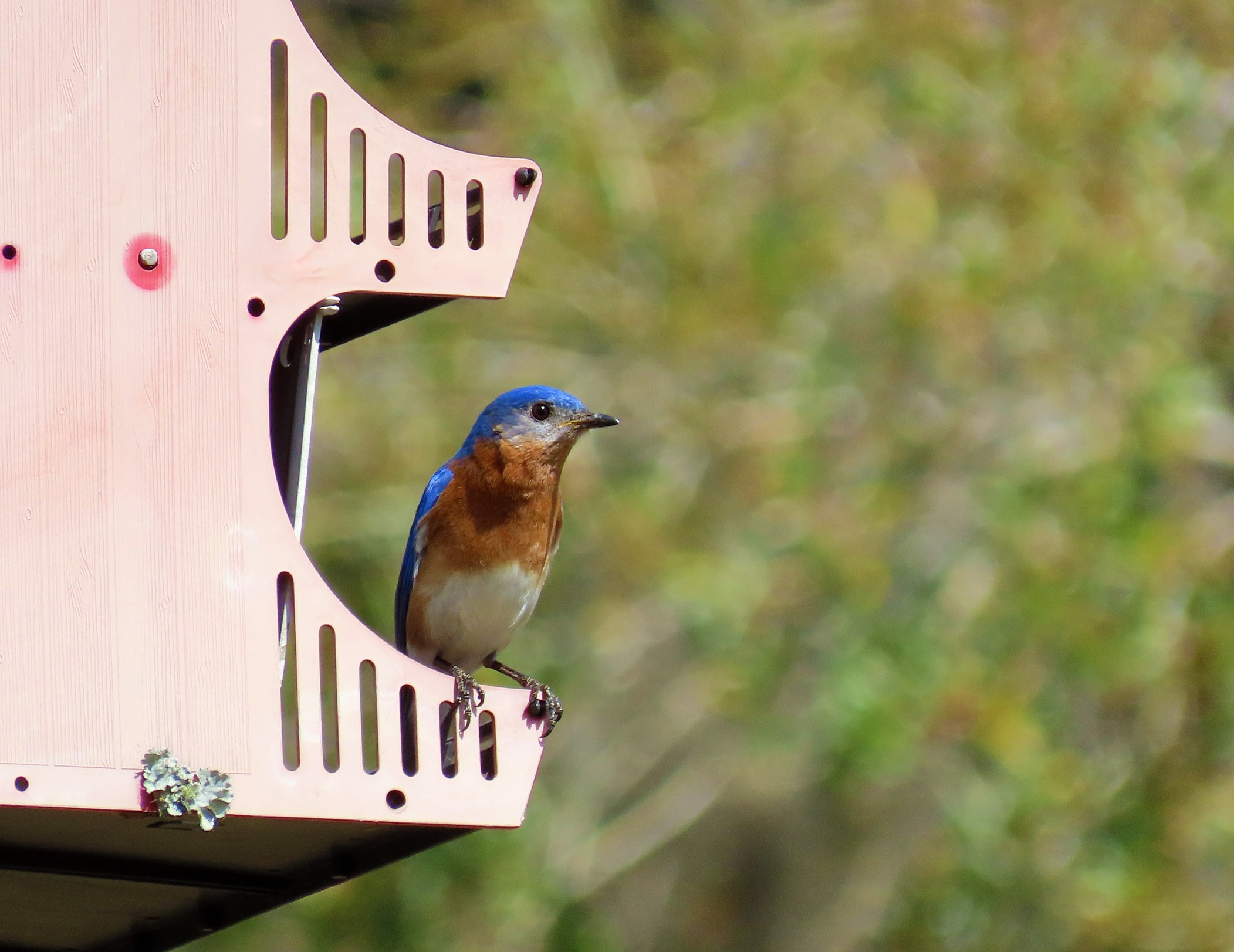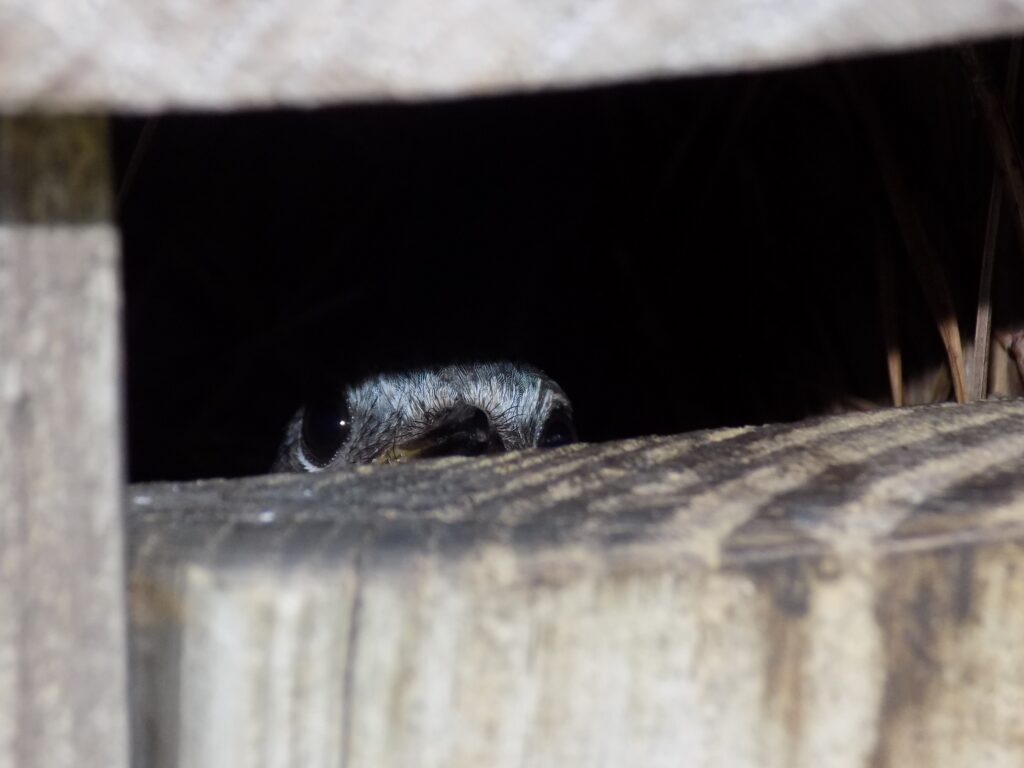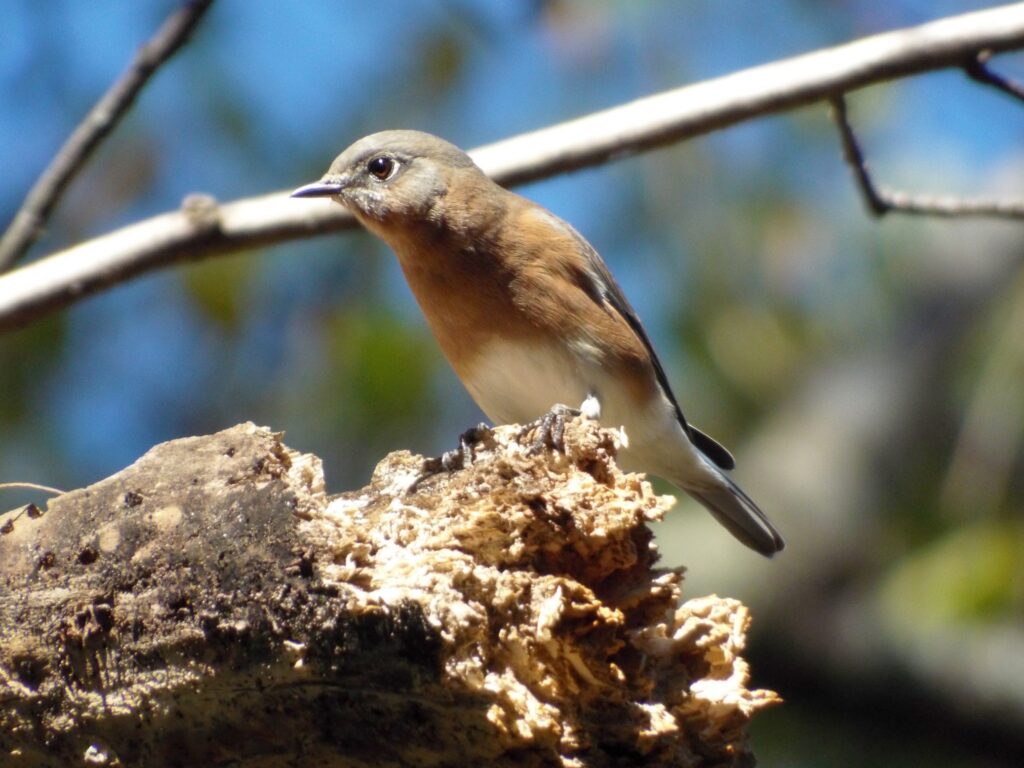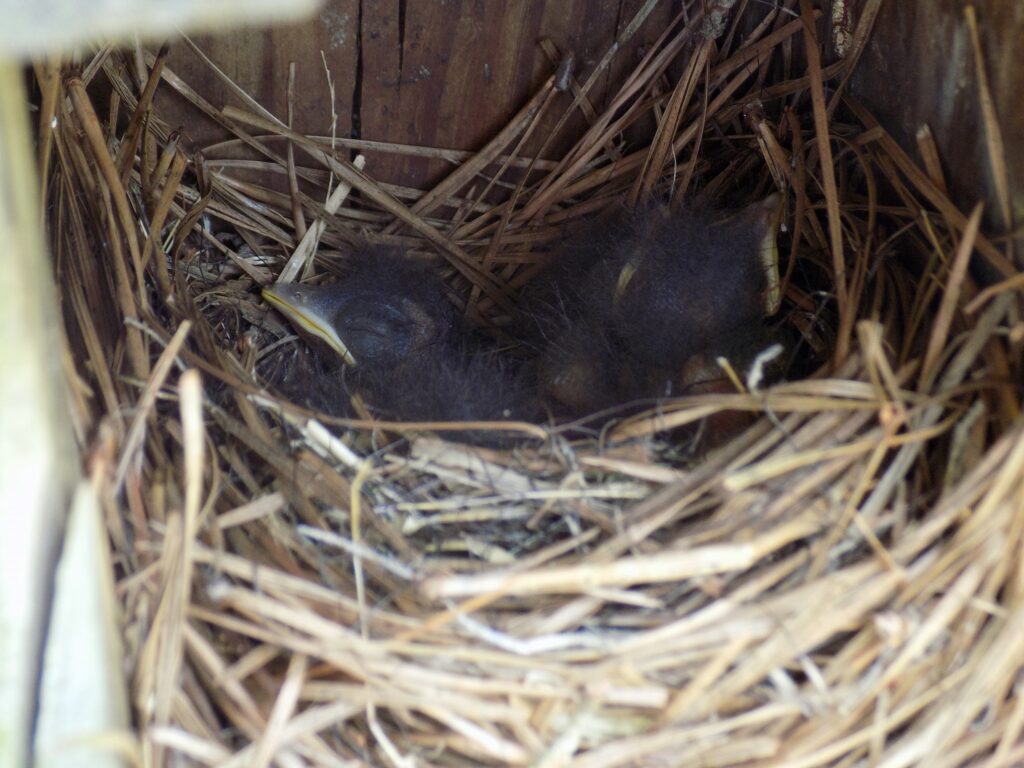



This week for Flora and Fauna Friday we have the cerulean songbird of the savanna, the azure agrarian avian, the Eastern Bluebird (Sialia sialis).
As I’ve touched on before, Eastern Bluebirds are a member of the Thrush family. Thrushes are stocky insect eating birds with large eyes and a narrow, pointed bill. Bluebirds fit this description but are more petite than other Thrushes. Their bill is thinner and they’re size is smaller but they maintain the prominent peepers. Both males and females are 6 to 8 inches long with a rusty red breast, dark beady eyes, delicate slate legs, and a cloak of that namesake’s shade. Females sport a cowl of aluminum gray running under patinated wings into a powdered copper blue fan of tail. Males are not so subtle and flaunt feathers of a rich sapphire abroad their back and a barrel-chested breast as red as Carolina clay. The red of the breast is a product of carotenoids. Carotenoids are red pigments produced by plants. Bluebirds acquire these pigments from eating insects who were eating those plants and the birds incorporate those compounds into their own bodies. Bluebirds feed on a wide array of arthropods. They can often be spotted hawking grasshoppers, plucking worms, biting beetles, and swallowing spiders. This third-hand pigmentation acts as a proxy for individual health when Bluebirds select a mate. A well fed bird is healthier. A well fed bird is redder. A well fed bird eats more pigment filled bugs. Or so a bird can infer. The blues of these birds are not any kind of pigmentation but the result of a polymer microstructure within the long dead cells of the feathers themselves. A protein lattice that’s mere shape induces the scattering and refraction of only blue light. An illusion of beauty.
Bluebirds were not as numerous and widespread as they are today. Their populations were sharply declining in the mid-1900s due to a lack of nesting habitat, competition for nesting habitat, and decreased nesting success. Bluebirds nest in cavities and, in order to have a cavity, you have to have something to carve a hole in. Bluebirds reuse old Woodpecker nests or expand feeding divets left by Woodpeckers on dead trees. Their natural habitats are open grasslands with high disturbance rates and trees mixed sparsely throughout. Habitats such as pine savannas and scrub barrens. The lumbering of Longleaf Pines in the 1800s removed a lot of their natural habitat but forest clearing for agriculture produced even more. However, as farms became larger and mechanized, the wind breaks and woodlots vanished, taking the Bluebirds with them. The introduction of invasive House Sparrows and Starlings from Europe created nest competition and these more aggressive exotic birds overwhelmed nesting Bluebirds. The use of the insecticides, like DDT, on farms continued the trend, killing the arthropods the birds depended on for food and lacing bluebird nests and the insects that did survive with the bio-accumulating toxin. In the 1960s, Bluebird nest box campaigns gained widespread public momentum and the use of DDT and similar insecticides was banned. Eastern Bluebird populations rebounded with staggering momentum. Nowadays, Eastern Bluebird populations have totally recovered and are still growing. They’re now even are more numerous and widespread than in pre-colonial days!